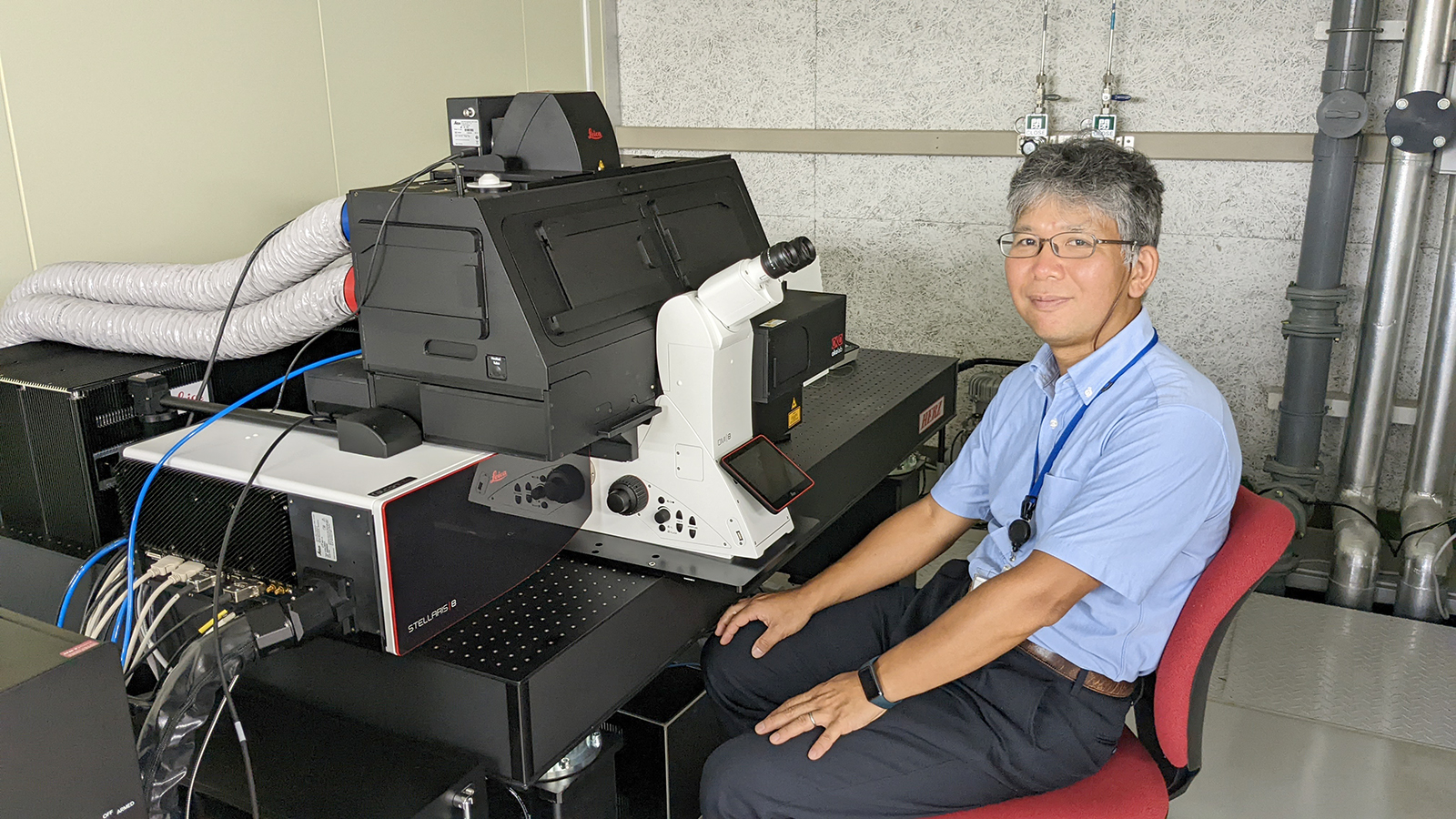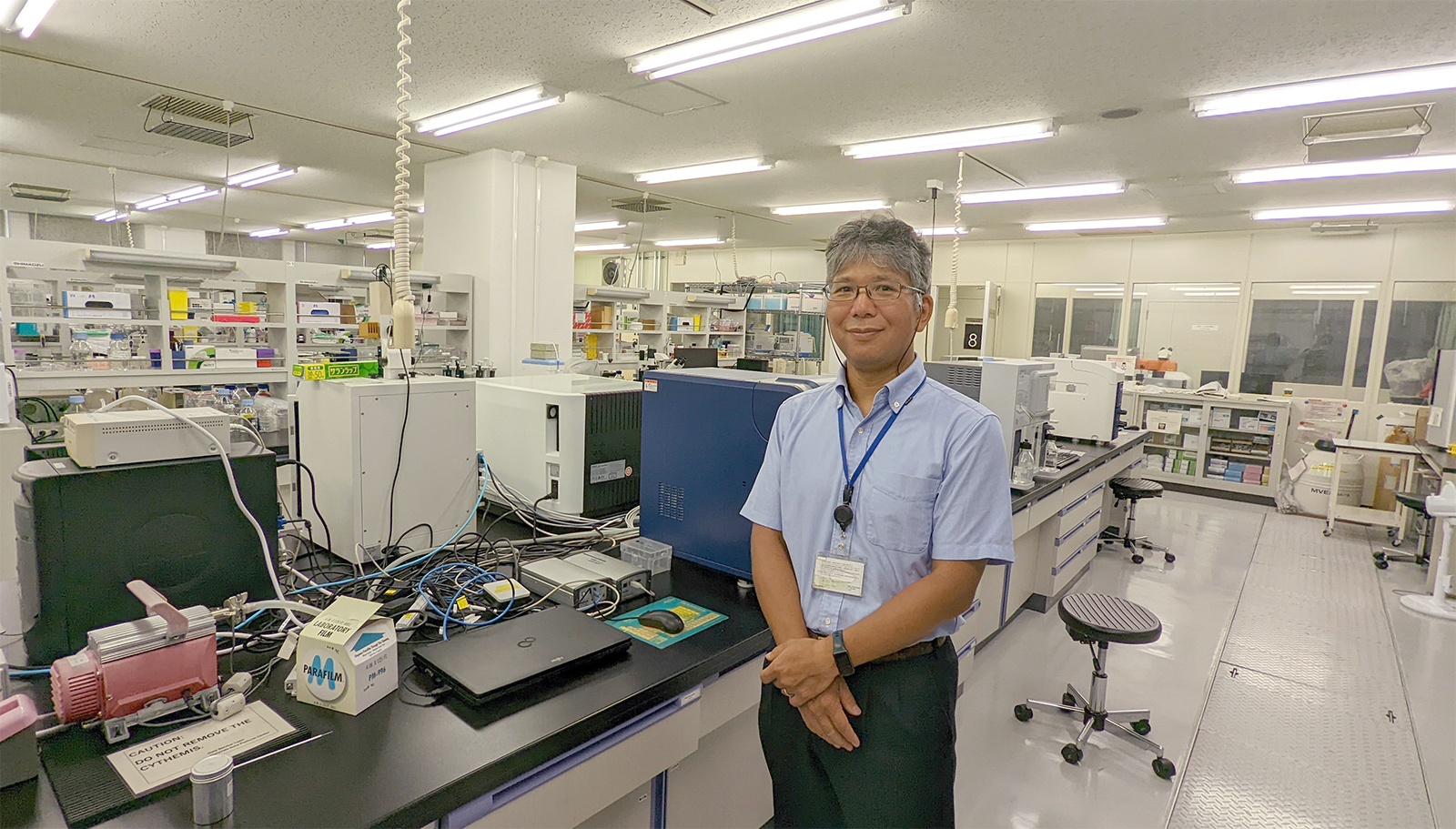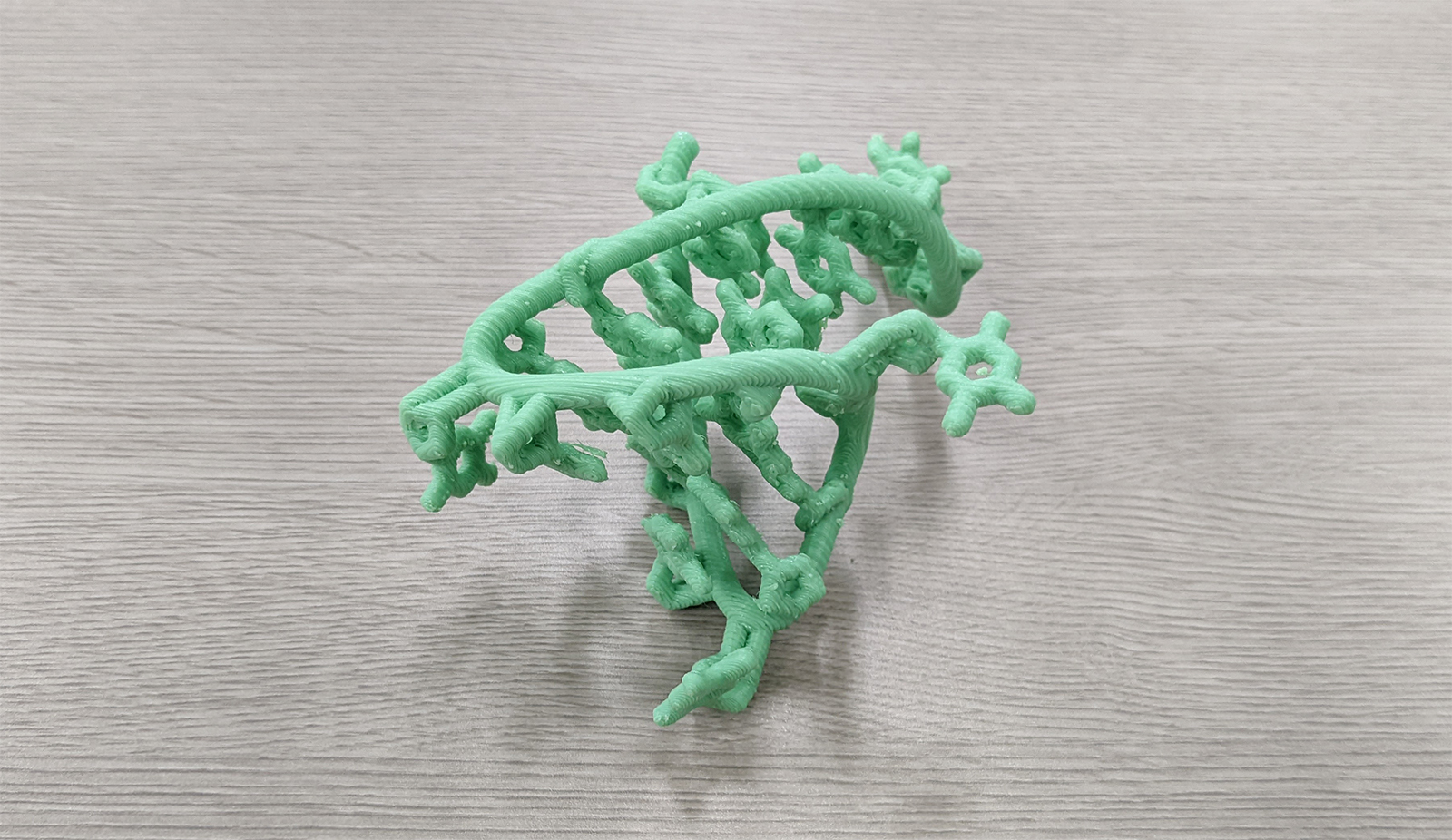Fusing life science and nanotechnology “Collaboration between Hokkaido University and NIMS”
Research Highlight | September 26, 2023
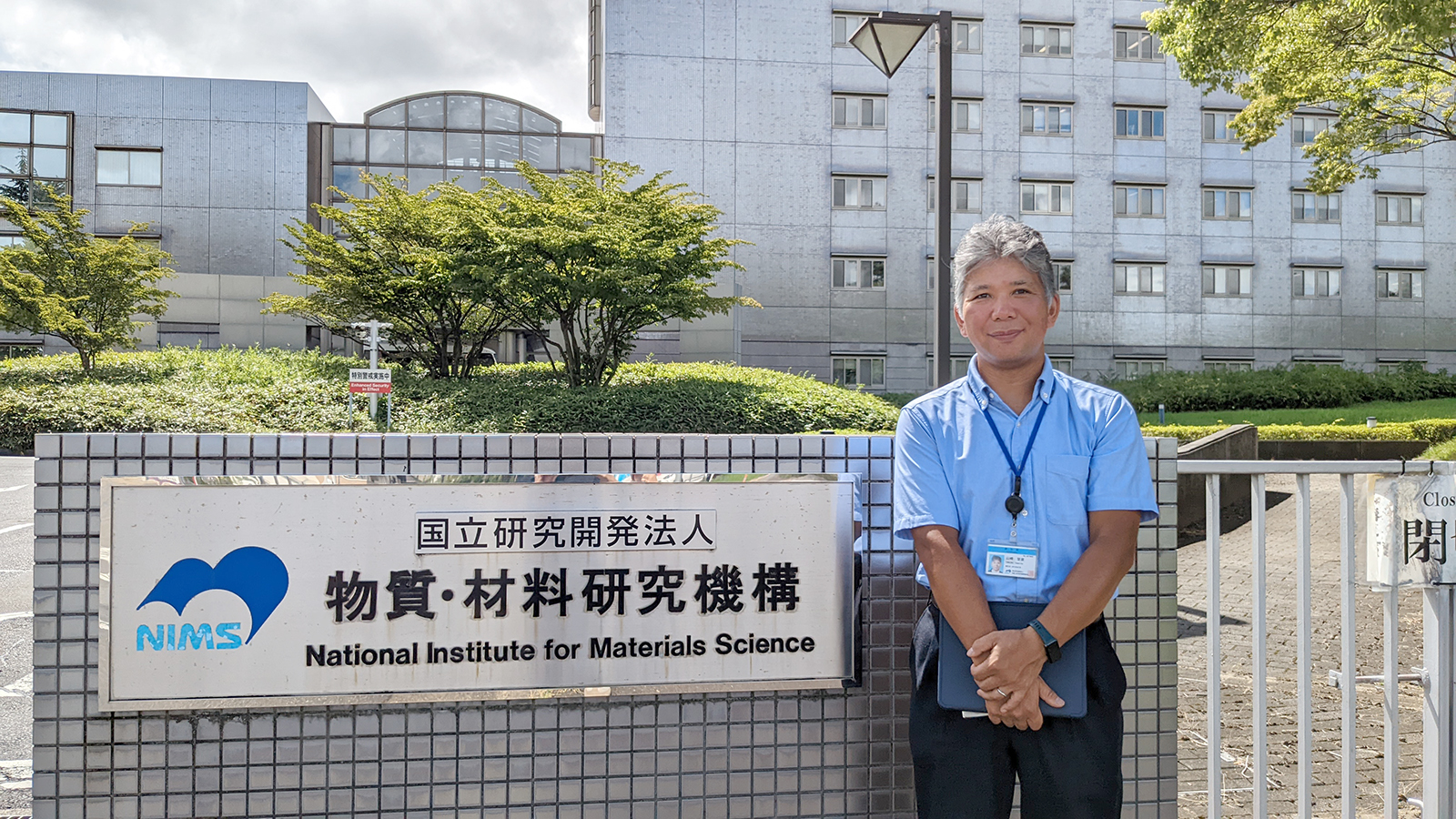
Dr. Tomohiko Yamazaki, Principal Researcher, Medical Soft Matter Group,
National Institute for Materials Science / Visiting Associate Professor, Graduate School of Life Science, Hokkaido University
The National Institute for Materials Science (NIMS), located in Tsukuba City, Ibaraki Prefecture, is a research institution specializing in research on materials and their applications for various purposes. It conducts comprehensive research in specialized fields related to materials and has been described as a “department store for materials research.” Hokkaido University and NIMS run a collaborative graduate school system by which 12 laboratories at NIMS accept graduate students from Hokkaido University. Yamazaki’s laboratory is one such lab, accepting students from the School of Life Sciences, and is engaged in research that applies biomolecules to medical treatment. After obtaining his doctorate from Tokyo University of Agriculture and Technology, Yamazaki worked at Lund University in Sweden and the National Institute of Advanced Industrial Science and Technology in Japan, and is currently based at NIMS.
Development of nanomedicine that controls immune responses
Yamazaki is developing DNA molecules designed to have a specific three-dimensional structure as well as ‘nucleic acid based nanomedicine.’ He works to elucidate the functions and mechanisms of biomolecules and then construct new artificial/designed biomolecules with improved functions through genetic engineering and protein engineering. Yamazaki is currently focusing on the development of bio-nano molecules that can be incorporated into vaccines to activate immunity in humans.
In addition to antigen molecules, vaccines contain adjuvants that strengthen immune responses. Adjuvants can increase the effectiveness of vaccines and thus reduce the amount of vaccine and number of vaccinations required. Furthermore, the amount of difficult-to-manufacture antigens can be reduced, reducing costs and making it economical to mass-produce vaccines. Aluminum salts (alum) are commonly used as adjuvants because they have well-established production methods, are inexpensive, and exhibit excellent preservability. However, alum also cause adverse effects, such as fever and allergies. Therefore, new adjuvants that have fewer adverse effects and are safer need to be developed.
Development of nucleic acid nanomedicine
Humans possess an immune mechanism that recognizes the DNA and RNA of pathogens and activates the immune system. It is known that CG sequences in DNA that originally exist in humans are methylated, but those derived from viruses and bacteria are not. When DNA contains unmethylated CG sequences derived from bacterial or viral uptake into the cells, the intracellular receptor Toll-like receptor 9 (TLR9) recognizes these sequences and triggers immune activation. This results in the production of IgG antibodies and activation of immune cells. Yamazaki and his team artificially synthesized shorter versions of this pathogen DNA and used them as adjuvants. DNA drugs that utilize such biological mechanisms have few side effects and are low-cost, but they have the disadvantage of being easily degraded by enzymes in the body.
Therefore, Yamazaki is focusing on a three-dimensional structure of DNA called the ‘guanine-quadruplex structure.’ DNA molecules synthesized using this structure as a scaffold form complex three-dimensional structures, which increases the DNA density, thereby making them difficult to be degraded, and allowing for efficient uptake by immune cells. “The guanine quadruplex structure is known as a structure that protects the ends of chromosomal DNA, called telomeres, within cells. Since it is a naturally occurring structure, it does not cause adverse effects when introduced into DNA drugs,” says Yamazaki. His future goal is to increase the stability and immune-inducing activity of DNA adjuvants consisting solely of unmodified DNA molecules, by fine-tuning their structure.
Research environment unique to collaborative graduate schools
“There are many international students in NIMS, making it a global environment.” Yamazaki also says that there is a lot of exchange between research teams in NIMS, helping students build a human network that will lead to their future research career. “NIMS has extensive research facilities, and the number of students per faculty member is small, so you can receive detailed guidance.”
Ms. Le Bui Thao Nguyen, a third-year doctoral student at Hokkaido University from Vietnam who came to NIMS using the collaborative graduate school system, said, “I was interested in Yamazaki’s research that combines biomaterials and life science. The generous fellowship system that NIMS offers also helped me come to this lab.” Mr. Pathak Soumitra, a second-year doctoral student at Hokkaido University and originally from India, said, “The appeal of NIMS is that you can work with a number of research professionals and be close to companies. In the future, I hope to work in the field of drug discovery to help improve people’s lives.”
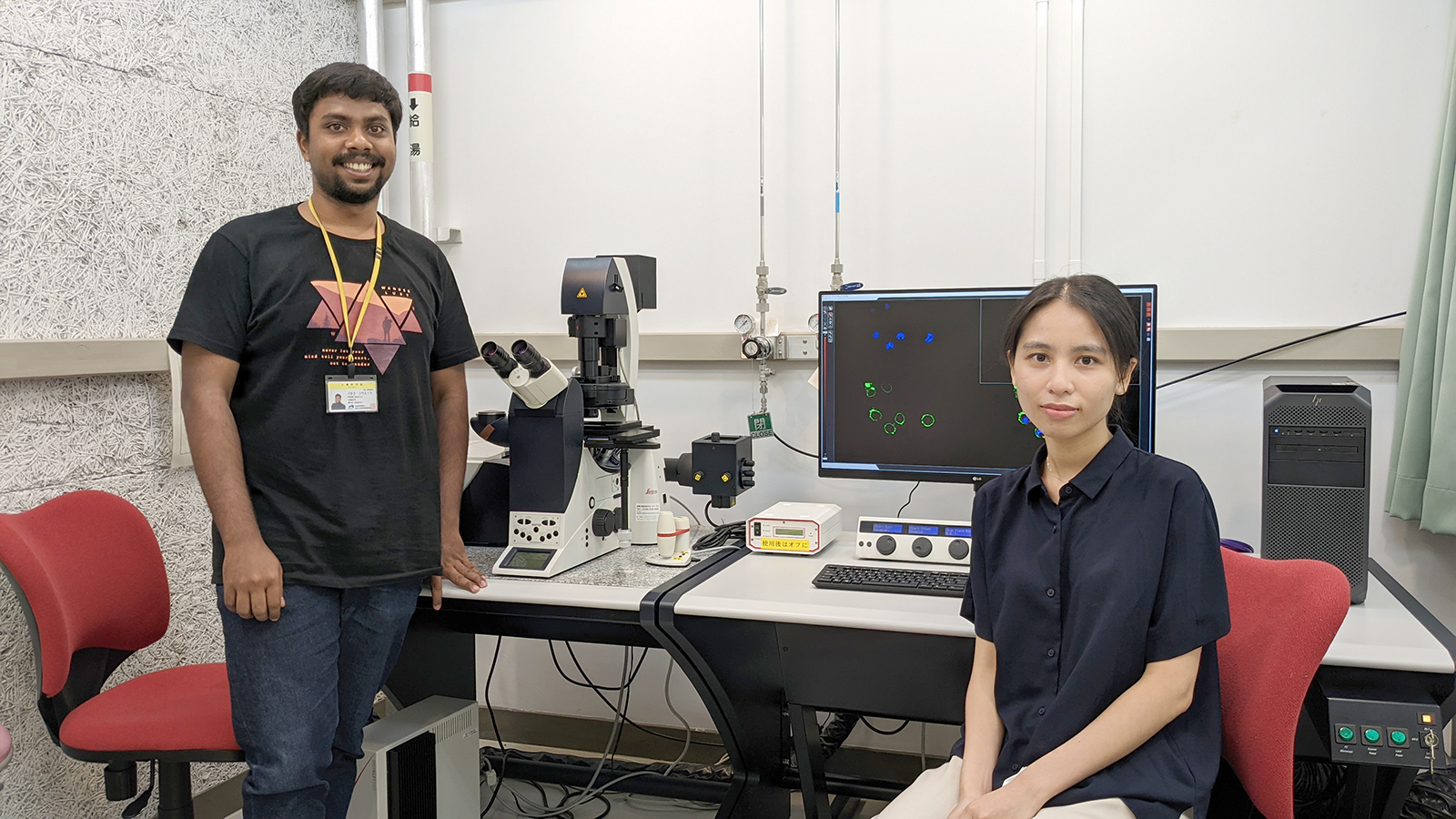
Pathak Soumitra (left), a 2nd year doctoral student, and Le Bui Thao Nguyen (right), a 3rd year doctoral student, both from Hokkaido University.
Yamazaki also said that accepting students has great benefits for the laboratory. “My team member consists mainly postdocs and staff members. They are research professionals, so to speak, but because of that, their perspectives can be biased. Therefore, fresh and flexible ideas from students are very valuable for the laboratory.”
Graduate students such as Le and Pathak can apply for the NIMS Junior Researcher position. This system allows students to engage in research while receiving financial support from NIMS.
Although the collaborative graduate school system with Hokkaido University is limited to doctoral courses, undergraduate and master’s course students can participate in the NIMS internship program. The purpose of this program is to allow students to participate in research at NIMS for up to 90 days, experience cutting-edge materials research, familiarize with the field. Students who pass the screening can also receive financial supports for the stay at NIMS.
Invitation to NIMS, Tsukuba
“There are not many researchers in biology at NIMS, so I’m looking forward to interacting with researchers in life sciences at Hokkaido University. From now on, I would like to deepen our ties by engaging in joint research,” Yamazaki said. Even researchers who are not affiliated with NIMS can use their extensive facilities just by completing the necessary procedures. So, if you want to engage in research in a world-class environment in the field of materials science, whether you are a graduate student or a researcher, why not consider researching at NIMS?
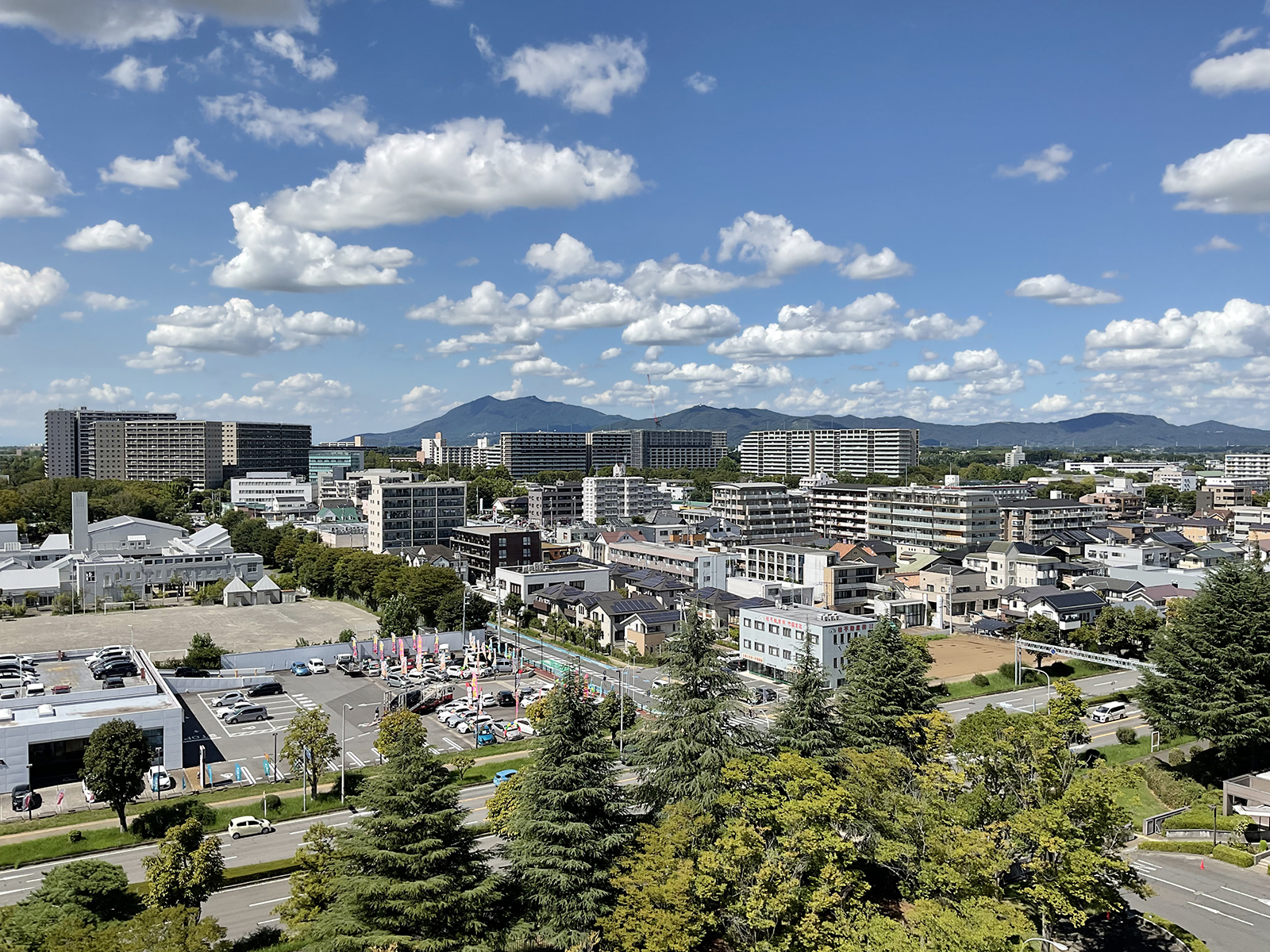
The view of Mt. Tsukuba from the NIMS building. The NIMS logo is inspired by these two mountain peaks. (Photo provided by: Tomohiko Yamazaki)
Text: Hina Tachibana (Science Writing Intern)
Photos: Naoki Namba

